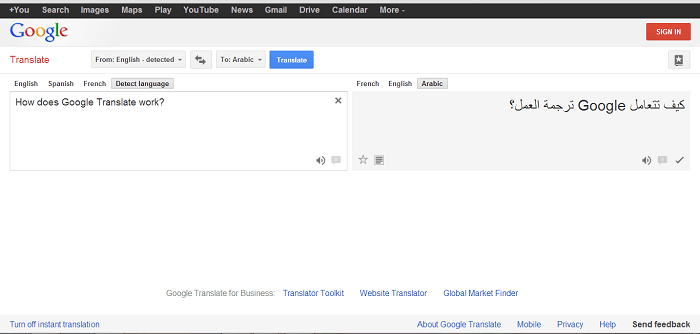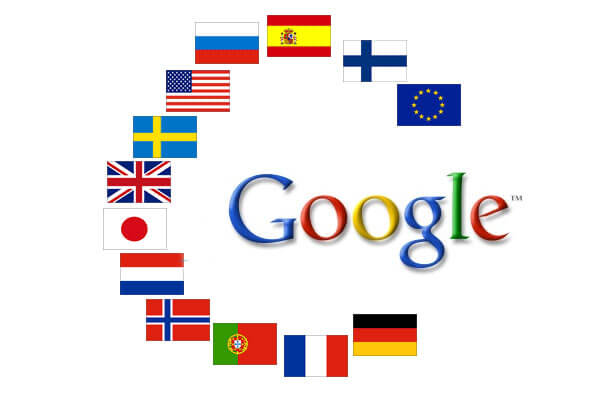As a citizen of the world and international culture vulture, I frequently encounter words, phrases and sometimes whole websites which are in one of the abundant and beautiful languages of the world. Unfortunately my citizenship doesn’t come with the skill to speak all of these languages, so how do I cross these barriers? Google Translate!
Google Translate is a great way to translate short pieces of text. It opens a gateway to information and resources which would otherwise be impenetrable without the help of a translator or time consuming language courses. It’s also pretty sophisticated in comparison to some of the other online instant translation tools. Word on the street has it that for European languages it has a high rate of accuracy.
So how does Google Translate work?
Well from what I understand, it searches the web for documents which are written in each language and tries to find patterns. This process used by Google Translate is known as “Statistical Machine Translation”. A computer has been “taught” how to translate between languages based on huge amounts of text; hundreds of millions in fact and it makes an “intelligent” guess regarding the most suitable translation. When you type in your word or phrase for translation, you’ll often be provided with alternative results. If you decide that there is a better word than that given, you click to send the feedback to Google and the system learns from these suggestions. Hmm… I’m not sure if I would rely on that for serious document translation.
Other cool features
• You can listen to your translated word or phrase
• You can see examples of the context in which a word would be used – both, original & translated word
• You can build up a phrasebook (you need a Google account for this)
Translation in action
I use Google Translate quite a lot, so I know its limitations, especially with Arabic. Quite often I will use the Google tool to translate a whole webpage when it would take me too long to read and understand it myself. The results are rarely of a high standard and I spend more time trying to “translate” the translated text! I find it’s much better for when I need to translate one or two words from English to Arabic or Arabic to English.
To demonstrate, I tried translating the question “How does Google Translate work?” it didn’t do a very good job.

Its accuracy largely depends on the number of documents it has access to. So as can be expected, languages such as Arabic, while quite good with some words, will be of lower quality than languages which are used frequently online, like French, Spanish and Italian for example.
Can Google Translate replace human translators?
It’s clear that while useful as a tool to translate the odd word or sentence here and there, machine translation is not an alternative to professional and skilled HUMAN translators. I’d imagine most translators would be insulted at the thought.
There is a lot more that goes into translation than memorising volumes of documents, not least skill, practice and experience. Understanding cultural nuances, the ways in which a languages is used across regions, within different settings and across generational gaps is essential to ensure translated work is accurate and of a high quality. So no, while Google is a pioneering company with amazing vision and creativity, it’s not quite at the level where it can produce software to replace the experts we have here at Creative Word Arabia.
Check out our translation services or Contact Us for a discussion on how we can provide you with error free translations.












